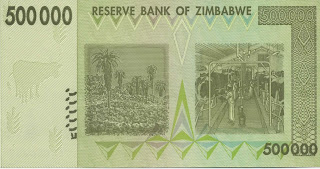Honiara, 27 September 2013:
The Bank of Solomon Islands yesterday unveiled the new $50 banknote at an event attended by a number of VIPs including the Finance Minister Rick Hou. This is the first denomination of the new family to be launched; the rest of the new banknotes will be issued over the course of the next few years.
The new note uses strong images and bold colours to reflect the vibrancy of the islands. On the front of the note, local basket weave designs are intended to represent the swirling movement of shoals of fish whilst indigenous fauna and flora - including an iguana, lizard and snake - are shown on the back. The most prominent security feature is the Optiks™ super wide security thread with a transparent window. The ingenuity of this feature was recently recognised when De La Rue received a Queen's Award for Enterprise: Innovation for this security thread and its associated paper making process.
In launching the new notes, the Governor Denton Rarawa acknowledged the continued support that the Central Bank of Solomon Islands has received from De La Rue during the development of this first note of the new family. "I appreciate the close working relationship between our 2 institutions which has assisted greatly in this project. We look forward to future collaborations as we develop the rest of the new family of banknotes".
De La Rue's Sales Director Ruth Euling said "We are honoured that the Bank of Solomon Islands has continued to place its trust in us and are proud to be associated with the launch of the new $50 note".
Optiks™ is a trademark of De La Rue International Limited
Rob Hutchison
Group Director of Communications, De La Rue
Tel: +44 (0) 1256 605018
Email: rob.hutchison@uk.delarue.com
Group Director of Communications, De La Rue
Tel: +44 (0) 1256 605018
Email: rob.hutchison@uk.delarue.com

















